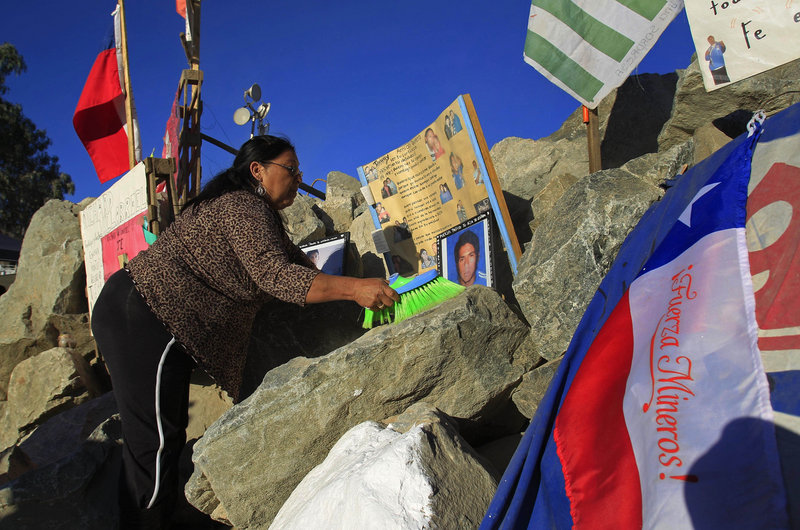SAN JOSE MINE, Chile — Rescuers have sent down antibiotics and ointments and were working Tuesday to blast cool, dry air to 33 miners trapped a half-mile underground for more than a month.
All the men have suffered from skin sores, foot fungi or abrasions, and infections could prove dangerous in the sweltering heat and humidity, with rescue at least six weeks away.
Scrapes, cuts and infections like athlete’s foot and jock itch are usually just minor annoyances. But trapped as they are in unrelenting 86-degree heat, with humidity at 88 percent, the miners don’t have any way of drying out.
In videos transmitted from down below, the miners can be seen shirtless and sweating.
In such an environment, any open wound presents a serious risk, so the miners have been instructed to use extreme caution. A simple cut from moving rocks could lead to dangerous infections, Chilean Health Minister Jaime Manalich told the media.
Most at risk are diabetics, who face increased complications from skin infections under the best circumstances. There is at least one diabetic among the trapped miners, who has been receiving insulin through the narrow bore holes that have become a lifeline for the miners.
The constant exposure to moisture creates the possibility of infections, especially when the men are living and sleeping together in close quarters and can’t shower, according to Dr. Boni Elewski, a dermatology professor at the University of Alabama, Birmingham.
The exposed skin on the feet as well as areas where sweat accumulates, such as around the groin, the neck, under the chin or between fat rolls, could foster sores or fungi — commonly known as athlete’s foot or jock itch — that could become infected with bacteria.
Limited hygiene and constant humidity also makes the miners susceptible to an infection and inflammation of hair follicles that causes itchiness.
And then there is gas gangrene, an infection that can start when bacteria commonly found in the soil enters a wound. This bacteria thrives in low-oxygen environments and rapidly kills tissue, making immediate removal of the affected area or amputation of a limb necessary, said Elewski.
“The longer they are there in this situation, the higher the risk that someone will develop a serious skin problem,” she said.
Copy the Story Link
Send questions/comments to the editors.



Success. Please wait for the page to reload. If the page does not reload within 5 seconds, please refresh the page.
Enter your email and password to access comments.
Hi, to comment on stories you must . This profile is in addition to your subscription and website login.
Already have a commenting profile? .
Invalid username/password.
Please check your email to confirm and complete your registration.
Only subscribers are eligible to post comments. Please subscribe or login first for digital access. Here’s why.
Use the form below to reset your password. When you've submitted your account email, we will send an email with a reset code.